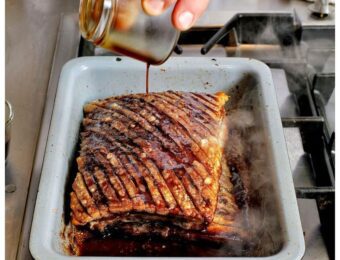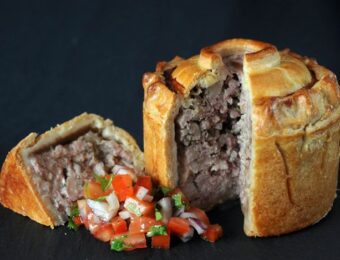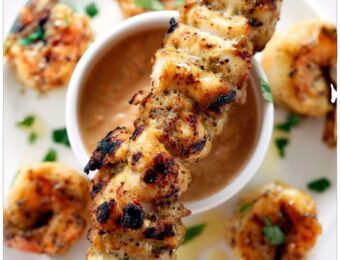Pork Cuts
Leg
A prime hindquarter cut that provides lean meat and is used either fresh or cured. The boned and rolled leg makes a premium roasting joint full of meaty flavours. Diced Leg and thin stir fry strips (Julienne) are excellent for stews and casseroles and leaner than diced shoulder meat. Leg Steaks or Escalopes are suitable for frying or grilling. The boned and rolled leg makes a premium roasting joint full of meaty flavours. Diced Leg and thin stir fry strips (Julienne) are excellent for stews and casseroles and leaner than diced shoulder meat. Leg Steaks or Escalopes are suitable for frying or grilling.
Chump
Unlike the loin, the chump or rump of the pig is rather short and usually cut into steaks or chops for frying and grilling.
Loin
The long back of the pig is the loin, providing the leanest meat and the most popular pork cuts. The whole loin bone in and the rind on makes a good roasting joint, but is too long for most domestic ovens. The Pork rack is the rib end of the loin which will fit into most domestic ovens. Pork Chops are cut from the bone in loin. The boned and rolled Loin is easily cut into smaller pieces and makes excellent roasting joints. The scored rind protects the lean meat from drying out when cooking and provides the wonderful crackling. Pork Loin Steaks are cut from the boneless middle loin, as are the Butterfly Steaks, which are Loin Steaks cut to double thickness and then partially cut through the centre and opened out. The tenderloin or Fillet is the leanest and most tender meat. It dries out quickly and should not be overcooked. Luxurious Pork Medallions, cut from the eye of the loin, are lean and firm and cooked in minutes.
Best End of Neck
The neck end or collar sits above the shoulder and can be divided into the spare rib (not to be confused with the spare ribs that are so popular on the barbecue) and the blade. It is slightly fatty and most often used cured for bacon or inexpensive diced or minced pork. A spare rib roast is an economical cut that benefits from slow cooking.
Hock
Cut from the base of the leg near the feet. Smaller than Hind leg Trotters, front Trotters are perfect for delicious stock making.
Belly
Almost as long as the loin, the belly provides rich and fatty meat. A boned and rolled Belly joint, roasted slowly over several hours until the fat has melted away, lubricating the meat in the process and producing the best crackling, is delightful. At the shoulder end of the belly sit the ribs. The rib sheets can be cooked as whole racks or cut between the bones into individual meaty spare ribs, which are full of flavour, good value for money and always popular for barbecues. Cured pork belly makes streaky bacon, smoked or unsmoked or Virginia cured and the Italian version, Pancetta.
Shoulder and Hand
Pork Shoulder meat is more fatty than pork leg meat and produces very tender and succulent roasting joints. Slowly roasted for hours it becomes meltingly tender. The whole bone in shoulder is too big for most households, but boned and rolled Pork Shoulder joints with a layer of scored skin for the crackling are easy to prepare and carve. Other uses for pork shoulder are diced shoulder meat for casseroles.
Feet
Hind Trotters are making a come back with the increased interest in cheaper meat cuts. They contain little meat, but are ideal for soups and stock.

Specially Selected Smoked Gammon Bone In
£52.00 2025-11-01T00:00:00.000Z instock /product/specially-selected-smoked-gammon-bone-in.html33 Reviews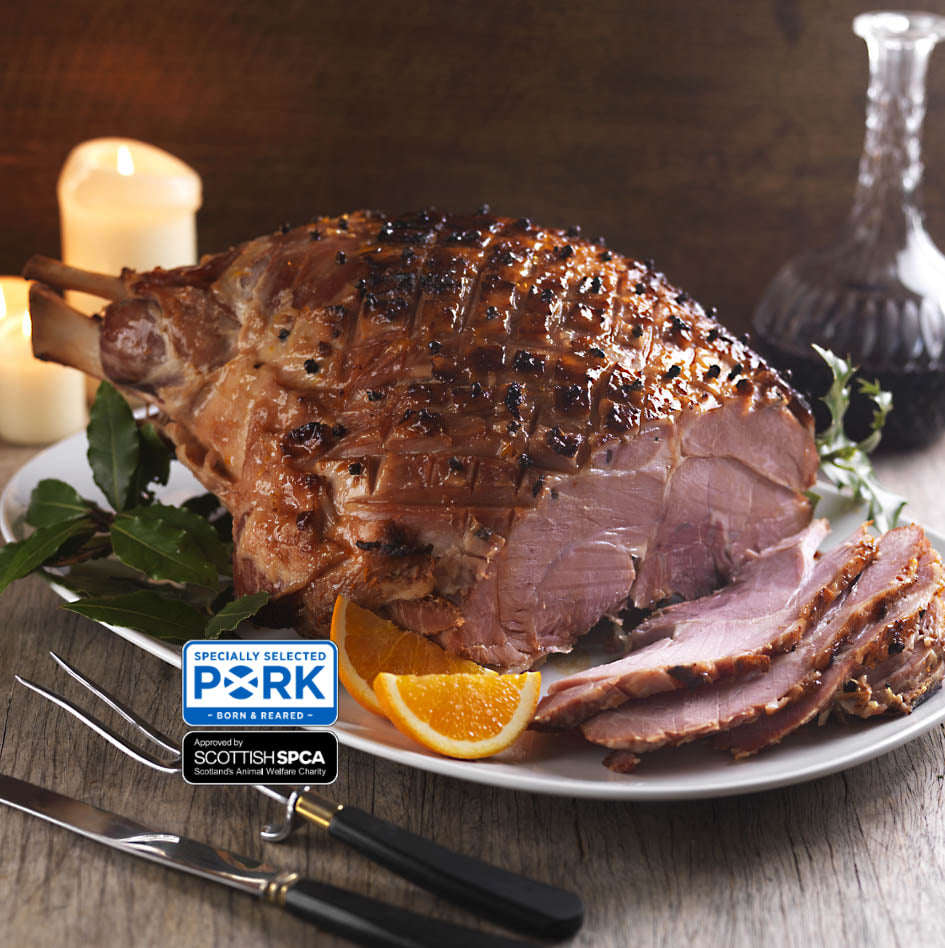
Specially Selected Gammon Bone In
£44.00 2025-11-01T00:00:00.000Z instock /product/specially-selected-gammon-bone-in.html72 Reviews

Scotch Beef Bavette Steak Twin Pack
£8.00 2025-11-01T00:00:00.000Z instock /product/scotch-beef-bavette-steak-twin-pack.html71 Reviews

Van Der Mey Unsmoked Back Bacon Sliced
£4.75 2025-11-01T00:00:00.000Z instock /product/van-der-mey-unsmoked-back-bacon-sliced.html95 ReviewsBest Seller
 £7.00 2025-11-01T00:00:00.000Z instock /product/pork-loin-steaks-pack-of-4.html79 Reviews
£7.00 2025-11-01T00:00:00.000Z instock /product/pork-loin-steaks-pack-of-4.html79 Reviews
- No Products

Virginia Cure Streaky Bacon Sliced
£15.00£11.99 2025-11-01T00:00:00.000Z instock /product/virginia-cure-streaky-bacon-sliced.html144 Reviews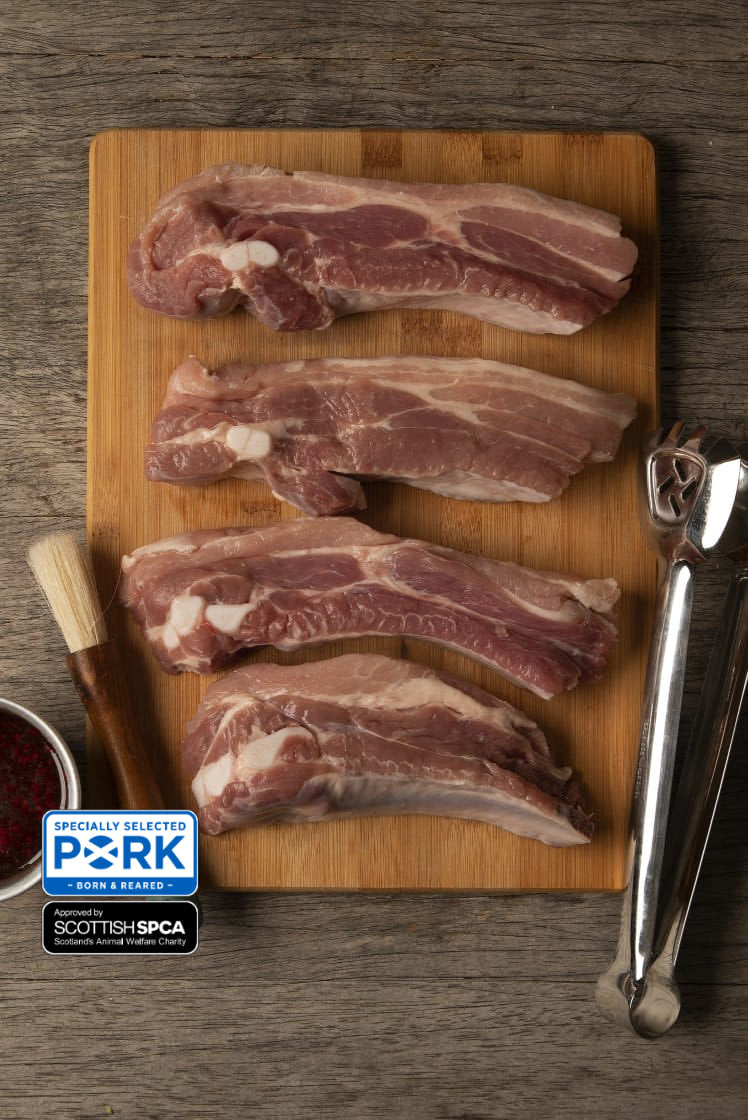
Specially Selected Pork Spare Ribs
£17.00 2025-11-01T00:00:00.000Z instock /product/specially-selected-pork-spare-ribs.html92 Reviews
- No Products
- No Products
- No Products
Related recipes
- 0
- 1
- 2
- 3
- 4
- 5




